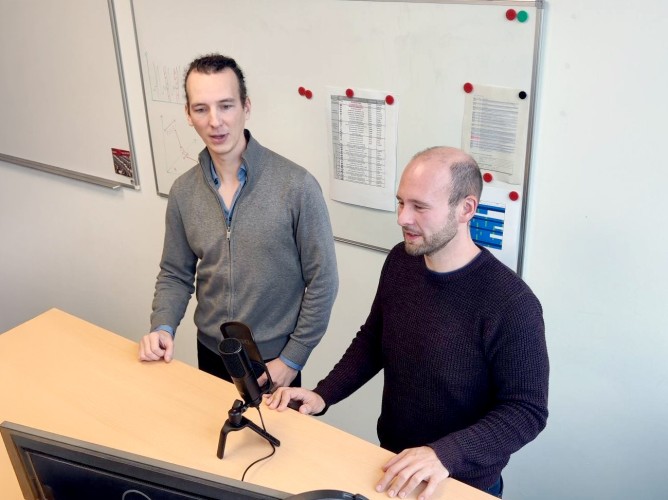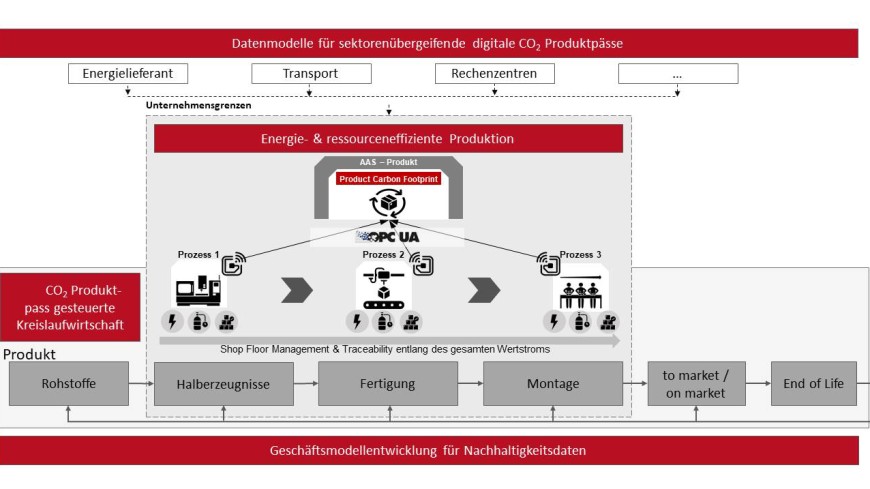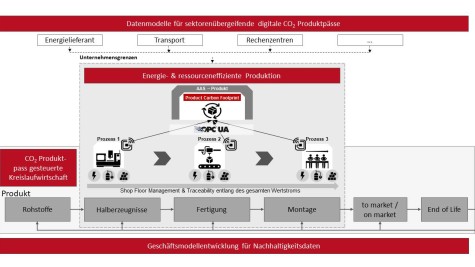Coordination:
Sebastian Karnapp M.Sc. (TEC)
Dr.-Ing. Daniel Fuhrländer-Völker (ETA)
Contact person in the research groups:
Andreas Wächter M.Sc. (ETA)
Hans Joachim Groß M.Sc. (CiP)
Sarah Mechenbier M.Sc. (CiP)
Enno Lang M.Sc. (MiP)
Dr.-Ing. Philipp Bausch
Marcel Fischer M.Sc. (MiP)
Duration: 05/2023 – 04/2026
Funded by: Federal Ministry of Research, Technology and Space
Website:https://clice-dipp.de

Creating transparency in value chains
VDI Podcasts “Technik aufs Ohr” with Dr.-Ing. Daniel Fuhrländer-Völker and Andreas Wächter – about the digital product passport, which is being developed in the CliCE-DiPP research project.
Initial situation
Determining the carbon footprint of a product is an important component for the goal of greenhouse gas-neutral production by 2045 and the introduction of a CO2-controlled circular economy. Considering only the greenhouse gas emissions caused during the production process is not sufficient. Rather, these must be included throughout the entire supply chain in order to calculate a “product carbon footprint”. To realize this, the manufacturing industry lacks information along the supply chain on the one hand and a standardized interoperable information model on the other. As part of the “CliCE-DiPP” project, a CO2 product passport is being developed, taking into account the value stream in the company and the supply chain. For this purpose, necessary analysis and optimization tools for the calculation of the Product Carbon Footprint will be elaborated.
Objectives
The aim of the research project CliCE-DiPP is the development of a digital CO2 product passport and the necessary analysis and optimization tools with special consideration of the circular economy. To achieve this goal, the supply chain is considered both horizontally and vertically. The horizontal view addresses on the one hand the value stream within company boundaries and on the other hand the one in the entire supply chain. The Product Carbon Footprint (PCF) is determined primarily on the basis of data provided by the Manufacturing Execution System (MES) and the Enterprise Resource Planning (ERP) system. These systems are linked via standardized interfaces. Compared to the vertical view, this comes with a low digitization effort. One research question here is to examine the trade-off between the required accuracy and the digitization effort required for this. In the vertical view, individual processes in the company are analyzed and these are enabled to calculate a PCF in real time. This detailed determination of the PCF at the machine level requires extensive monitoring of the corresponding production facilities, which is why they are equipped with appropriate sensor technology. In order to determine the PCF, the previously used MES and ERP data is expanded to include machine data, so that a causation-based PCF can be calculated.
Approaches
For the project-specific implementation, production machines and plants are enabled, for example with the help of sensor technology, to determine all necessary process and product data and to provide them in a standardized manner with the OPC UA communication architecture. From the data provided, the consumption of resources of each production sub-process is converted into a specific product carbon footprint and stored in an asset management shell. This information is combined with traceability data of the individual products and summarized in a digital CO2 product passport.
Funding source
Project sponsor
Consortium partners




